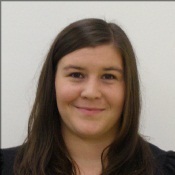Program Information
Quantification of Rotational Variation in Mouse Setup for IGRT
R McCarroll*, A Rubinstein , C Kingsley , J Yang , P Yang , L Court , UT MD Anderson Cancer Center, Houston, TX
Presentations
SU-E-T-463 Sunday 3:00PM - 6:00PM Room: Exhibit HallPurpose:
New small-animal irradiators include extremely precise IGRT capabilities. However, mouse immobilization and localization remains a challenge. In particular, unlike week-to-week translational displacements, rotational changes in positioning are not easily corrected for in subject setup. Using two methods of setup, we aim to quantify week-to-week rotational variation in mice for the purpose of IGRT planning in small animal studies.
Methods:
Ten mice were imaged weekly using breath-hold CBCT (X-RAD 225 Cx), with the mouse positioned in a half-pipe support, providing 40 scans. A second group of two mice were positioned in a 3D printed immobilization device, which was created using a CT from a similarly shaped mouse, providing 10 scans. For each mouse, the first image was taken to be the reference image. Subsequent CT images were then rigidly registered, based on bony anatomy. Rotations in the axial (roll), sagittal (pitch), and coronal (yaw) planes were recorded and used to quantify variation in angular setup.
Results:
For the mice imaged in the half pipe, average magnitude of roll was found to be 5.4±4.6° (range: -12.9:18.86°), of pitch 1.6±1.3° (range: -1.4:4.7°), and of yaw 1.9±1.5° (range -5.4:1.1°). For the mice imaged in the printed setup; average magnitude of roll was found to be 0.64±0.6° (range: -2.1:1.0°), of pitch 0.6±0.4° (range: 0.0:1.3°), and of yaw 0.2±0.1° (range: 0.0:0.4°). The printed setup provided reduction in roll, pitch, and yaw by 88, 62, and 90 percent, respectively.
Conclusion:
For the typical setup routine, roll in mouse position is the dominant source of rotational variation. However, when a printed device was used, drastic improvements in mouse immobilization were seen. This work provides a promising foundation for mouse immobilization, required for full scale small animal IGRT. Currently, we are making improvements to allo±w the use of a similar system for MR, PET, and bioluminescence.
Contact Email:


